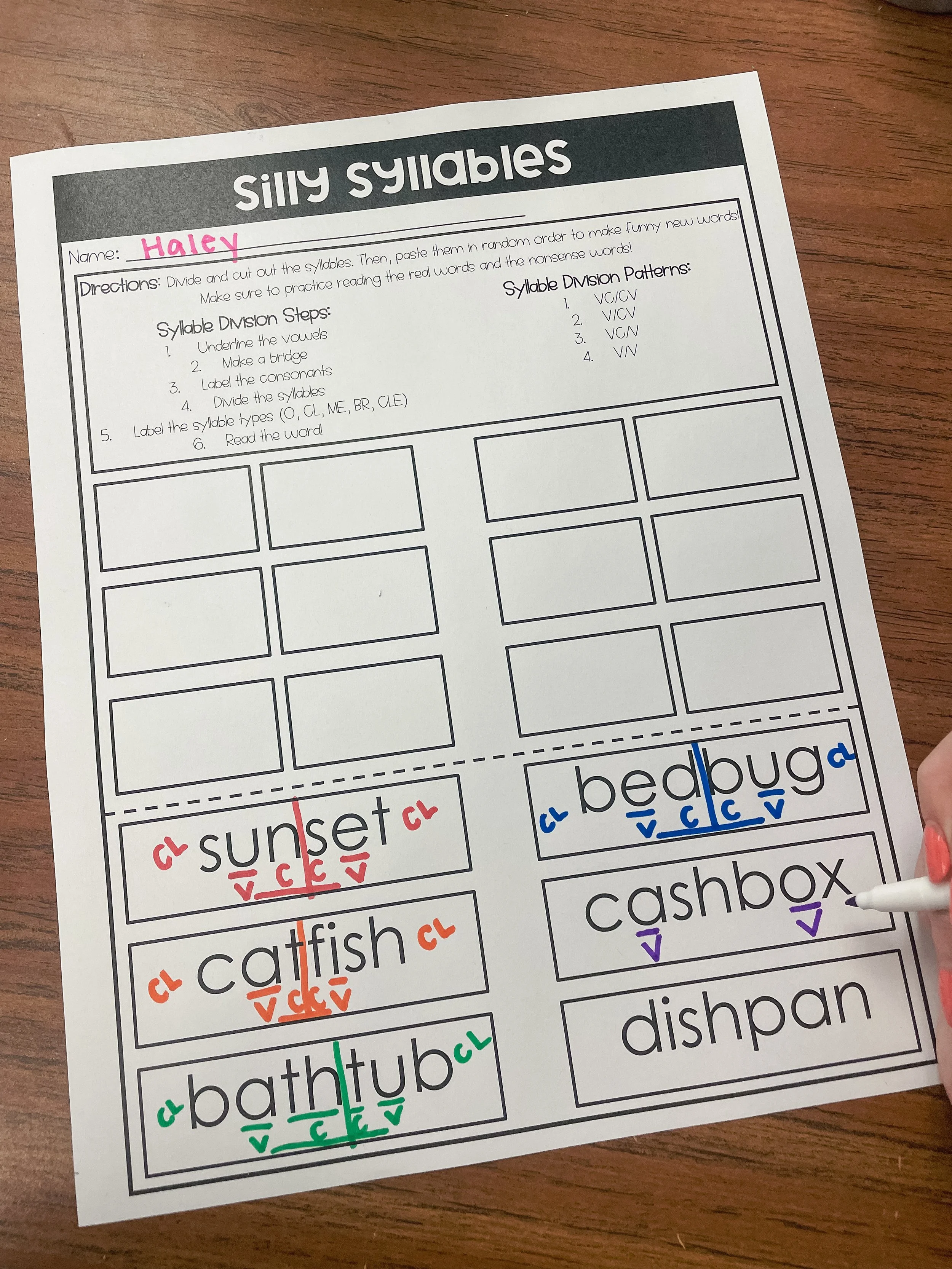3 Engaging Ways to Help Your Students Master Open & Closed Syllables (FREEBIES INCLUDED!)
WHERE ARE MY ORTON GILLINGHAM TEACHERS AT?
If you teach Orton Gillingham, The Science of Reading, and/or Phonics First, you know all about the importance of syllable types. As a second grade teacher, it is absolutely imperative that my students are able to decode and encode open and closed syllables types with ease and accuracy. This is a skill that we practice all year long. Sometimes it can get monotonous for both myself and my students. I have spent the last year coming up with different ways to practice in order to help my second graders to stay engaged. Keep reading to learn more!
First Things First, What are Open and Closed Syllables?
Open and closed syllables are the two most common syllable types in the English language. Closed syllables and open syllables make up 73.6% of the syllables in our language! That is why it is so important to make sure students can accurately encode and decode these types of syllables.
Closed Syllables:
These syllables are often referred to as CVC syllables. They end in a consonant and have a short vowel sound. Examples are cat, dog, smack, tin, pot, get, etc.
Open Syllables:
Open syllables are commonly called CV syllables. They end in a vowel and have a long vowel sound. Examples are go, she, be, hi, so, etc.
Now that we have that out of the way, let’s jump into some fun ways to practice them!
Here are some ideas to try!
she, shed
he, het
ba, bat
ti, tip
pa, pat
go, got
so, sod
be, bet
ro, rot
po, pock
A Low Prep Game: Syllable Match
All you need to play this game a some index cards, scissors, and a pen! Simply follow these steps!
Cut 10 or so index cards in half.
On each piece of an index card write an open syllable and a closed syllable using the same first two letters. Don’t worry about all of the words making sense! The point of this is to be able to decode these syllables properly, even if they are nonsense words!
Put students in pairs and have them flip the cards over into an array.
Students take turns trying to match the open syllable word with the corresponding closed syllable word. Make sure they read each word when they flip it over, focusing on the correct pronunciation of the vowels.
If a student finds a match, they can take it from the game!
No Prep Activity: Color by Code
Students love to color! Coloring promotes creativity and helps strengthen fine motor skills. Phonics color by code activities allow students to exercise their artistic skills while practicing phonics!
I have created a many color by code syllable activity sets. However, this specific one is perfect for the beginning of the year! This activity pack allows students to differentiate between closed and open syllables, saving the remaining syllables for later in the year.
Try a page for yourself! If you like it, you can grab the pack that has 10 different color by codes! You can also check out the end of the year pack with all of the syllable types or even snag the growing bundle!
No Prep Activity: Silly Syllables
I don’t know about you, but I always find that my students do a better job remembering a concept when they find it silly or funny. With this idea in mind, I created silly syllables!
This activity has students divide words into syllables and then mix them up to create new wacky words! They always crack up reading the new words they created. Then they pick their favorite new word and draw an illustration of that wacky word. This activity is wonderful because it has students decode syllables in existing words and then encode the syllables into a new one!
Try a page here! If you like it, you can grab the pack with over 100 different silly syllable activities! This pack will get you through the entire year as the activities add in more syllable types as they are taught.
I promise that the upfront work on open and closed syllables will pay off in spades as more syllable types are taught! Enjoy and good luck!
- Haley & Emmy














